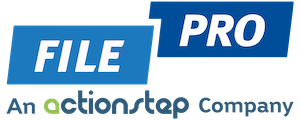Photo: FilePro’s stand and graffiti artist, Sheeps, at ALPMA Summit 2015 (Check out more on our LinkedIn page)
The theme at this year’s Summit was ‘Tomorrow’s firm: Digital. Divergent. Disrupted.’ However, like most forays into the future, it was out of date before it even began.
Why? Because tomorrow’s firms are already here.
An Australian Inventory of NewLaw, curated by Edge International, suggests there are a growing number of local entities competing in digital, divergent and disrupted spaces.
Each casts itself at the bleeding edge of this professional services evolution, leveraging off advances in technology and pitching differentiated offerings and pricing models. In so doing, they have become major disruptors in the market for legal services.
So, what exactly is NewLaw? How can firms properly utilise such strategies? Will it affect every type and size of law firm? What are clients’ expectation of NewLaw? These are the questions Jordan Furlong of Edge International, who conducted a Master Class on “Integrating NewLaw into your Firm”, sought to answer. This article will take you through just some of his many insights.
What is NewLaw?
Dr George Beaton coined the term NewLaw to describe the radically different approaches to structuring and management that we see evolving in law firms around the world. ” Furlong, writing with Sean Larkan also of Edge International, defined it as:
“Any strategy, structure, model, process, or way of delivering legal services that represents a significantly different approach to the creation or provision of legal services than what the legal profession traditionally has employed.”
NewLaw – Are we there yet?
Not all strategies adopted by NewLaw are actually new. Many firms are already on board, checking internal efficiencies within systems and procedures. Furlong suggests adopting the discipline of legal project management will yield valuable clarity as to what works best and which systems or procedures are outdated.
Similarly, outsourcing some legal work – either on-shore or off-shore – has become relatively common. NewLaw takes flexibility and agility to another level, embracing strategies such as engaging contract labour for dedicated projects and even placing that labour onsite with the client.
Big and small
Furlong and Larkan are quick to point out that all entities listed in Edge International’s Australian inventory are “invariably small or mid-tier operations”. One might think then that the larger the firm, the more difficult the challenge to adapt to or embrace NewLaw thinking.
Not necessarily, says Furlong. Even piecemeal changes to your firm’s philosophy around client service, costing or workplace culture can bring you to the starting line with these newly established players.
NewLaw – New Culture
Furlong spoke candidly about the need to rethink workplace cultures. As clients realise their power to demand types and levels of service that are more attuned to their specific needs, your firm will need to demonstrate just how agile and flexible you can be.
Traditional notions of workplace, office hours and modes of employment do not make for the hyper agility that will be required to service more demanding clients.
Likewise, compensation systems need to go beyond billable hours as their primary reference point, in order to incentivise more client-centric lawyering. This strategy appears on nearly every ALPMA Summit program but achieves a relatively narrow take up.
Law practices are reluctant to shift away from traditional time costing for anything other than the most rudimentary legal services. Furlong insists that the current buyers’ market may be the catalyst to finally bring this change to bear.
The major catalyst of change: NewLaw Clients
This massive change is driven by ‘NewLaw Clients’ – clients who know the value of their position in a buyer’s market.
Clients who don’t sense their work is a priority for their law firm will shop around until that need is met. And there are plenty of firms, whether they be NewLaw or otherwise, eager to woo your clients and their business away.
Looking forward
Furlong insists that the move from a firm-wide, lawyer-centric model to client-centric mindset can be a gradual process. He suggests you might start by simply having a conversation with clients about the type and level of service they expect. But be warned: don’t ask a question unless you are ready and willing to listen to the response.
Of course, before you can adapt to these changes, you first have to recognise that change is upon us. You may be forgiven for not being aware of the speed and magnitude of change, even at this early stage of the NewLaw evolution. However, as Furlong suggests, “recognition is one thing; action is another”. It is only a matter of time before all clients, large and small, understand the power they have to effect change – in your firm or in someone else’s.
You can watch presentations from the 2015 ALPMA Summit on-demand for $99 each or $330 for the whole package.
Ann-Maree David
Executive Director, College of Law Queensland
Chair, ALPMA 2015 Summit Committee

